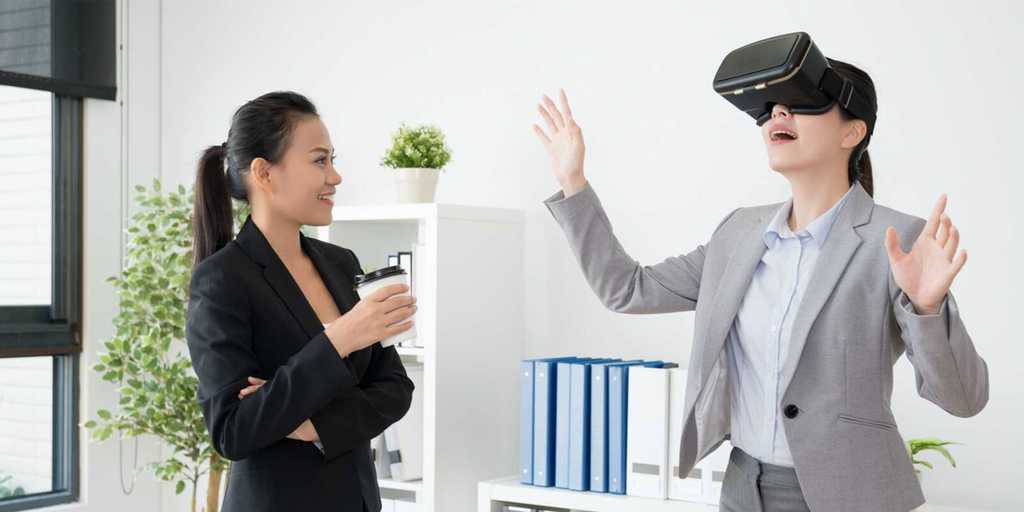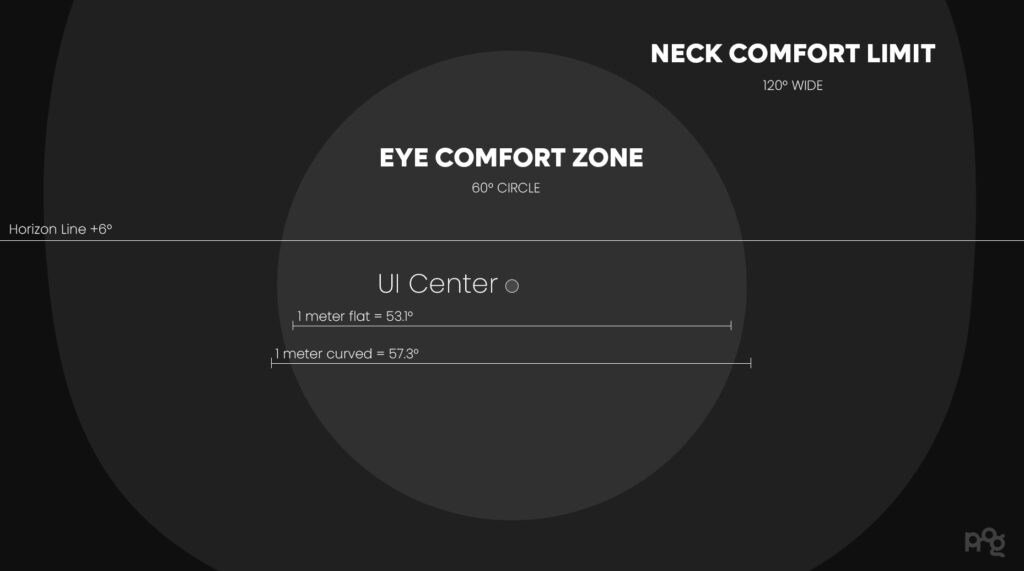27 September
Designing VR for Business
Business
Design
min. read

VR is mainly associated with games, but it is worth noting its aspect in the context of business applications that can bring sales to a new level and guarantee a better shopping journey.
Simply saying – immersive experiences are no longer associated only with entertainment.
In this article, we will focus primarily on the visual side of such a VR application. What is the difference in UI design for non-gamers who do not play games every day (or quite often) and are not familiar with the specificity of this medium, what technological standards exist in this area, what stages of such design can be distinguished, and we will also pay attention to the comfort of using VR for business by potential customers.
With a VR headset, we immediately move into a simulated environment, through which we cut ourselves off from the natural environment, which is why it’s so important to properly lay out the view of the application so that the user doesn’t get lost or feel bewildered.
Understanding target group & purposes
From this point, design begins. Customers who are not gamers and are mainly used to mobile screens have a completely different intuitiveness than those who play games and have experience with controllers, headsets, and other forms of input devices. Such factors should be considered when preparing the target audience, as they will be decisive in using VR. Preparing a persona will be very helpful.
The purpose of building such an application will also play a huge role. Before starting the UI design and moving the whole project forward, it is essential to determine what they want to achieve with the company and how it fits into its overall business strategy. Is there a problem that VR can solve? What benefits can VR bring to the client? Whether someone wants to increase product awareness, create a positive impression, and improve brand perception. The goal is to present the product in an editable form or as it looks in real life. With a clear vision, the development team is more efficient in tailoring specific solutions.
Technology standards
The most important thing is what the user is used to. The tendency is not to invent anything new. Use solutions that they already know.
Gaming VR reaches all users who have an Oculus Quest. It is also known at the same time that everyone who has an Oculus also has some games installed, among which other business applications in VR will not be found in most cases. We can see, then, that VR for business is another category to which we should apply different standards, and for the development team, this approach is key.
For example, an important thing is avoiding motion sickness, which can appear often with non-gaming users. It’s all about the proper distances.

In VR, the screen is placed freely in space. A term such as head comfort zone, means the angles at which it is comfortable to move the head. Eye comfort zone, on the other hand, is to embrace the image with your eyes without turning your head excessively. In general, in VR you can turn and twist your head, but such solutions are unlikely to be recommended precisely for users of business applications, mainly because they usually sit and are accompanied by an assistant who instructs them. So a comfortable view equals 60°.
It’s important to remember how crucial head tracking is in design, as even the slightest break in tracking causes the aforementioned motion sickness. Along with the principle of using constant velocity at low speeds and grounding the user in their environment, these are top guidelines needed for any basic VR experience, including a business one.
Creating interfaces in Adobe XD was very complex initially because the interface was always made with a 2D screen in mind, and a 2D screen (computer monitor/phone) already always has a determined distance at which it is viewed. The moment the 3rd dimension enters, it turns out that a 600 pixel by 600 pixel image seen from 2m away will be something different than seen from half a meter away and something even different from further away, so pixels are not a valid unit in VR (and mixed reality too). In VR, we have a viewing angle of 1mm from 1m, so if we see 1mm from 1m away, we see 1°. The millimeter is thus the unit that replaces pixels. Calculations are essential, and there are many ways to do it – you can do it on grids, but there are other methods. The second thing is to transport this into a Unity or Unreal Engine mesh.
With an eye on VR for business, among the unfavorable design practices may be placing a lot of arrows or other interface elements in the environment, as people may not only get lost but, more importantly, not want to be so actively involved in such participation. Most want to see the products/real estate as if they were there and nothing more.
Obstacles to effective VR use
Obstacles that may occur in the use of VR business application:
- users are limited by time at shows or showrooms, hence an overly complicated interface may block the ability to explore the entire offer/product;
- the salesperson is able to handle one person at a time;
- a user panel is often necessary to help the salesperson handle it;
- even if we have 10 pairs of goggles, it doesn’t mean that it will be possible for everyone to use them at once. Safe space must be maintained, and for that you need a lot of space, which cannot always be provided.
In addition to the time mentioned above and space constraints, individual user needs can also be listed. Some will need more time to find their way around the virtual reality and move there. Some less, but it is worth remembering that using simplicity in design will promote a positive experience and ensure a good user journey (and also speed up the process of using the VR app).
Conclusion
Creating a plan when projecting a design in VR is a multi-step journey that involves many factors. Still, with the right development team that knows how to make customized applications, businesses can increase sales and improve brand appeal in customers’ eyes. If you are wondering about stepping forward with your own business app, please contact us to discuss all the opportunities.
Also, don’t hesitate to check out our successful VR projects.
Let's talk
I agree that my data in this form will be sent to [email protected] and will be read by human beings. We will answer you as soon as possible. If you sent this form by mistake or want to remove your data, you can let us know by sending an email to [email protected]. We will never send you any spam or share your data with third parties.
I agree that my data in this form will be sent to [email protected] and will be read by human beings. We will answer you as soon as possible. If you sent this form by mistake or want to remove your data, you can let us know by sending an email to [email protected]. We will never send you any spam or share your data with third parties.